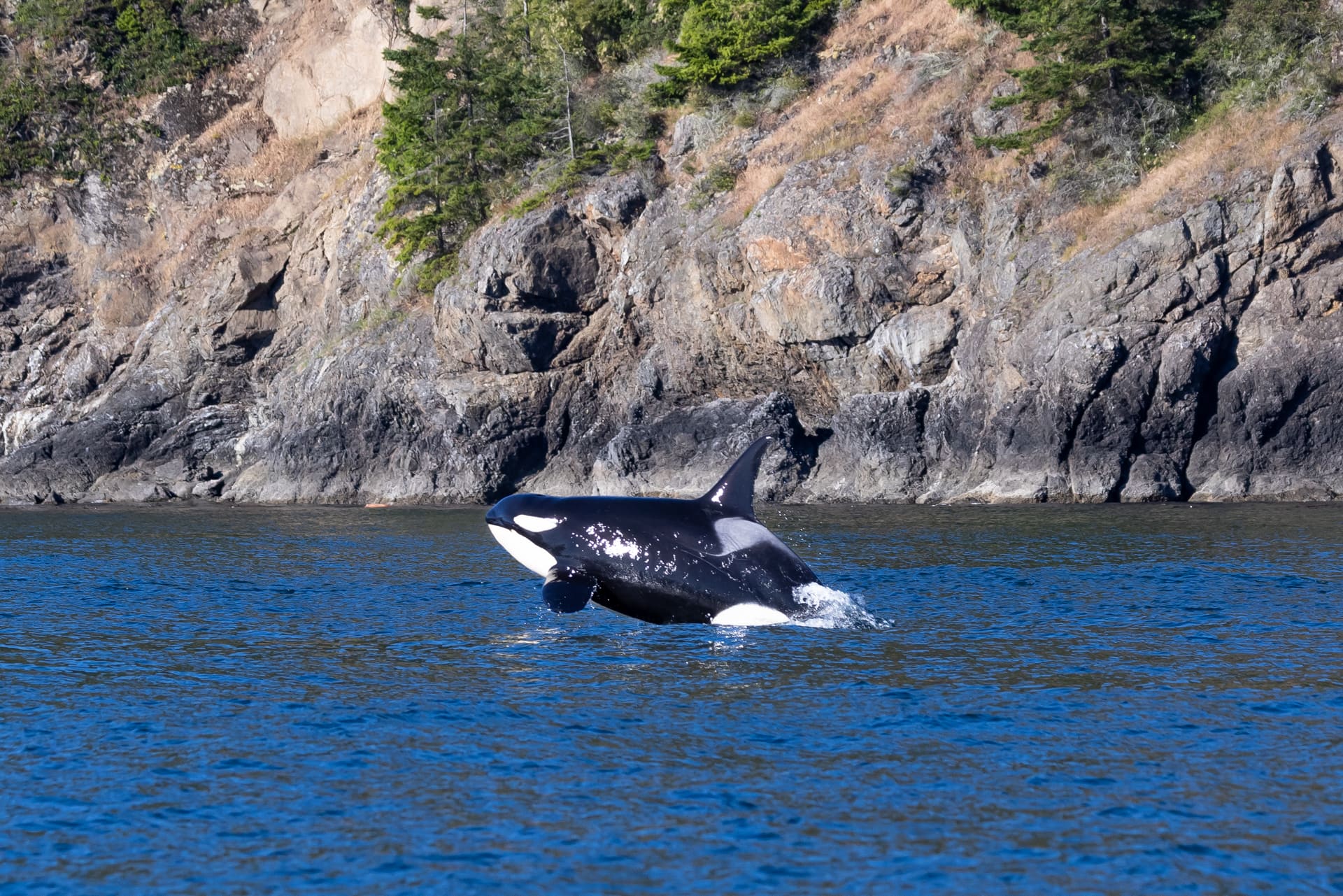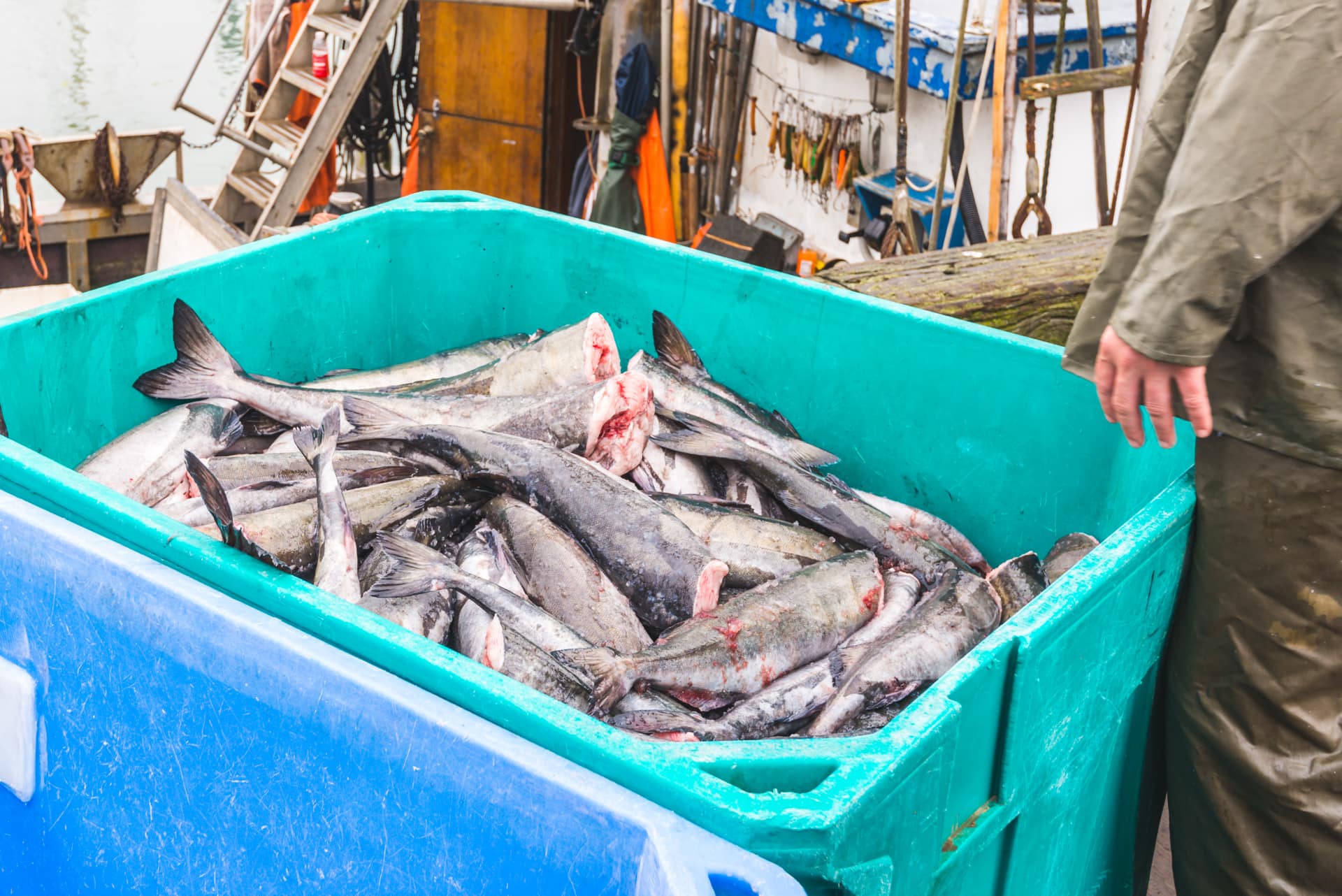
Scientists speculate that hunting marine mammals is a relatively recent phase of killer whale evolution. In fact, killer whales and false killer whales are the only oceanic dolphins to add mammals to their menu. Can the fossil record give insights into when these two species adapted to hunt different prey types?
Scientists examined a recent fossil discovery and declared that it was an unknown dolphin ancestor—never seen before. They named it Rododelphis stamatiadisi, Rodo-delphis—a dolphin from Rhodes—the Greek Island where the paleontologist Stamatiadis found it. This new-to-science dolphin is one of the most complete cetacean fossils ever discovered, living 1.5-1.3 million years ago.
What did they learn?
With a largely intact skull—including ear bones and jaw with 25 teeth—and large sections of the spine and ribs, there was enough evidence to compare this animal with living and extinct dolphins. They found that “killer-whale-like” features such as a large skull and jaw, together with the size and number of teeth, distinguished this from all other living dolphin family members except Orcinus orca and Pseudorca crassidens, otherwise known as killer whales and false killer whales.
In fact, by examining the known family tree of the Delphinidae (dolphin) family, they determined that this unknown dolphin shared a common ancestor with true and false killer whales but was more closely related to modern false killer whales and, at 13 feet, was similar in size.
Despite their name, these “killer whale” species are unrelated yet independently developed similar adaptations in their evolutionary history. Morphological changes, such as larger body size and a change in tooth structure, ultimately enabled them to catch and eat other dolphins. But when did this change occur?
Fish-eating ancestors
One striking finding was that the wear and condition of this animal’s large teeth suggested a fish-based diet. As fish scales are abrasive to enamel, they leave fine scratches on the tooth surface, indicating contact with scaly prey. This finding was further reinforced by the fact that fossilized, identifiable fish bones were found next to this fossil, showing that blue whiting—a fish still living today—was the last meal of this ancient whale!
The team analyzing the new fossil also considered recent analysis from another, much older relative. Found in Italy, this animal was first described as Orcinus citoniensis in 1883, and as a result of this study, it is now considered the only known member of the genus Orcinus, to which the modern orca belongs.
This orca ancestor was estimated to be roaming the oceans 3-4 million years ago. Although about half the body length of today’s top predator, the teeth were similar in size. Tooth wear, with fine, straight scratches, “likely resulted from frequent contact with finely abrasive material, which in turn suggests preying upon small-to-medium-sized fish.”
No evidence of tooth wear—consistent with eating prey with robust skeletons—was evident in these ancestral dolphins. In contrast, modern-day mammal-eating killer whales’ teeth have “gouges or hypercoarse scratches” to their enamel and more visible damage, such as chips.
These analyses support the theory that marine mammal hunting is a “recent innovation” in killer whale evolution, as their overall body size and teeth adapted to hunting large fish. Therefore, just in the last million years, they have diverged and adapted to catch prey ranging in size and diversity from herring to blue whales and even great white sharks! Scientists predict that DNA will show that these stark differences are enough to create new species or subspecies.
Continued below...
Some populations of Atlantic killer whales eat fish and mammals and prey switch according to availability, such as during herring spawning or seal pupping. However, scientists believe these killer whales are “generalists” rather than the “specialists” we know in the Pacific Northwest who catch only fish OR mammals.
So what should we make of it when Southern Resident killer whales kill harbor porpoises yet don’t eat them? Wild Orca co-authored a scientific paper on this in 2023. We don’t believe this is their first step towards a diet change; it is more likely a form of play behavior or salmon-hunting practice. Given that their salmon-eating culture is thousands of years old, there’s no time to wait for an evolutionary change in their diet. To save these whales, we must protect their primary food source, the Pacific salmon species they co-evolved with.





